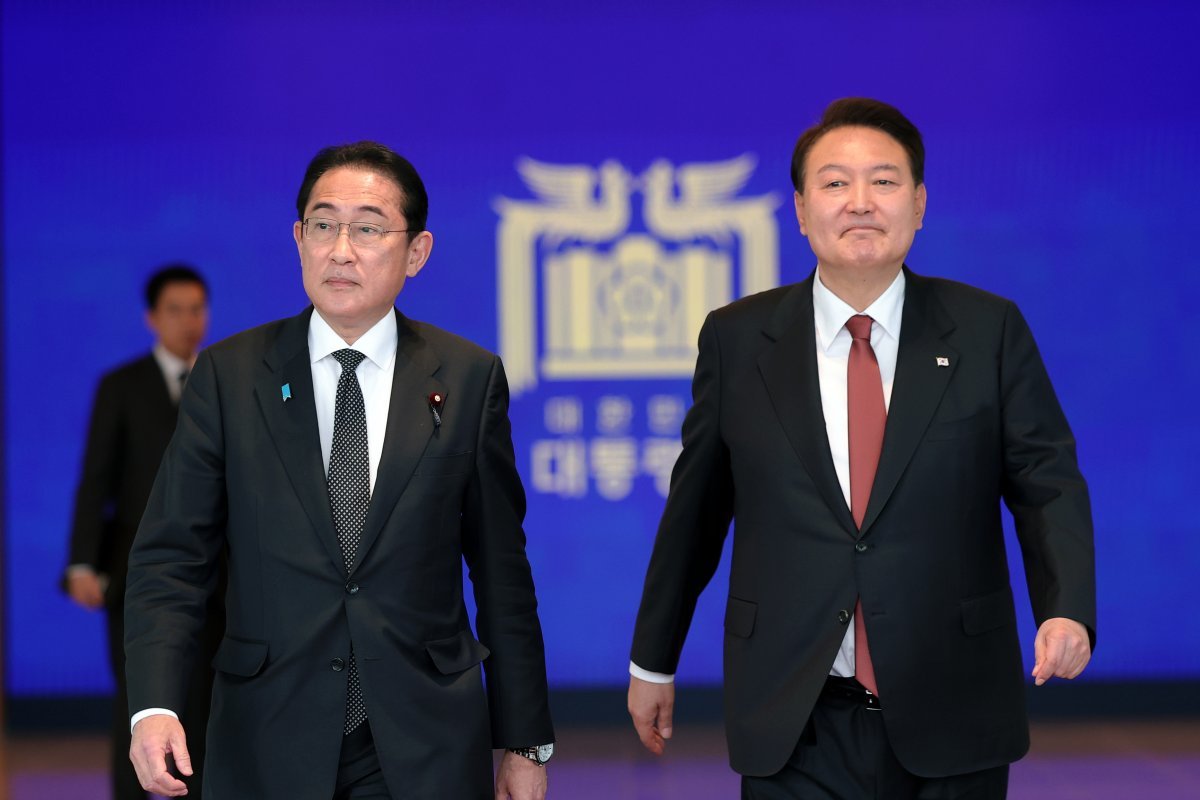The Yomiuri Shimbun and others reported on the 11th that the Japanese government is considering a plan to have President Yoon Seok-yeol and other leaders of participating countries visit the Hiroshima Peace Memorial Museum during the G7 summit to be held in Hiroshima on the 19th to 21st.
Opened in 1955, 10 years after the atomic bomb was dropped on Hiroshima, this museum displays various exhibits showing the reality of atomic bomb damage, as well as materials and videos informing the dangers of nuclear weapons.
Japanese Prime Minister Fumio Kishida has been strongly pushing for visits to the museum, saying, “(overseas leaders) must see the reality of the atomic bombing.” The Asahi Shimbun said, “Through the visit to the museum, we want to convey the reality of the radiation exposure to the heads of countries and create an atmosphere for nuclear disarmament and nuclear proliferation prevention.”
 President Yoon Seok-yeol (right) and Japanese Prime Minister Fumio Kishida. (Provided by the Office of the President) 2023.5.7
President Yoon Seok-yeol (right) and Japanese Prime Minister Fumio Kishida. (Provided by the Office of the President) 2023.5.7Japanese media reported that the visit to the museum by the leaders of 15 countries, including seven major countries and eight invited countries including Korea, is in the final stage. However, it is known that the United States, France and the United Kingdom, the victors of World War II, expressed their resistance to the proposal in the first place. NHK Broadcasting said on the same day, “The positions of each country regarding nuclear weapons are different.” “The United States in particular strongly believes that the atomic bombings (dropping) of (Hiroshima and Nagasaki) were necessary to quickly end World War II, and showed reluctance as the presidential election (next year) is ahead. ” reported.
It is controversial how far to tour the museum. The museum consists of the East Hall, which deals with the dangers of nuclear weapons and the history of reconstruction of Hiroshima, and the main hall, which shows the horrors after the atomic bombing. A Japanese government official said, “We need to proceed carefully so that the visit to the museum itself is not cancelled.” In 2015, when U.S. President Barack Obama paid his respects at the Hiroshima Atomic Bomb Victims Citadel and stopped by the museum, he only stayed in the east building for a while and did not go to the main building.
It is pointed out that Japan, a war criminal country that caused the Pacific War and plunged East Asia into the abyss of tragedy, could be criticized for emphasizing the position of the victim while avoiding responsibility if the heads of state of each country are forced to visit the museum.
The Sankei Shimbun reported on the 11th that the Japanese government is coordinating in the direction of holding a Korea-Japan and Korea-US-Japan summit on the 21st, the last day of the G7 summit. On the 21st, President Yoon and Prime Minister Kishida paid their respects together at the memorial stone for Korean atomic bomb victims near the museum.
Tokyo =
Source: Donga
Mark Jones is a world traveler and journalist for News Rebeat. With a curious mind and a love of adventure, Mark brings a unique perspective to the latest global events and provides in-depth and thought-provoking coverage of the world at large.